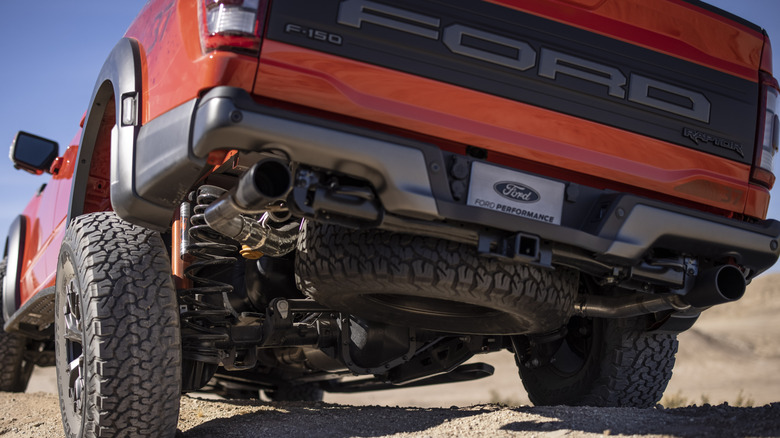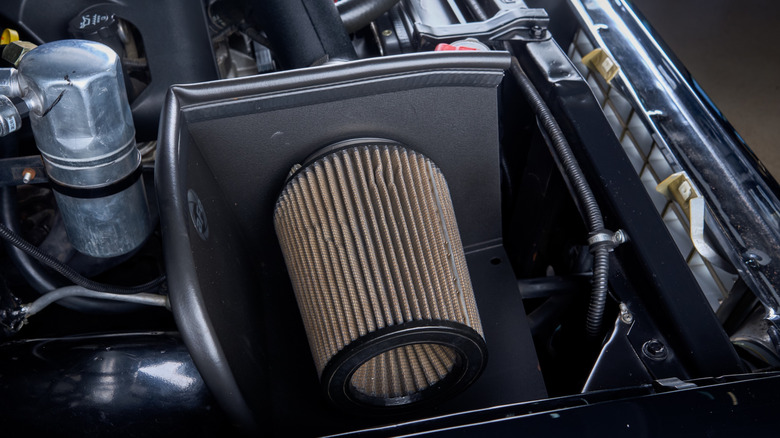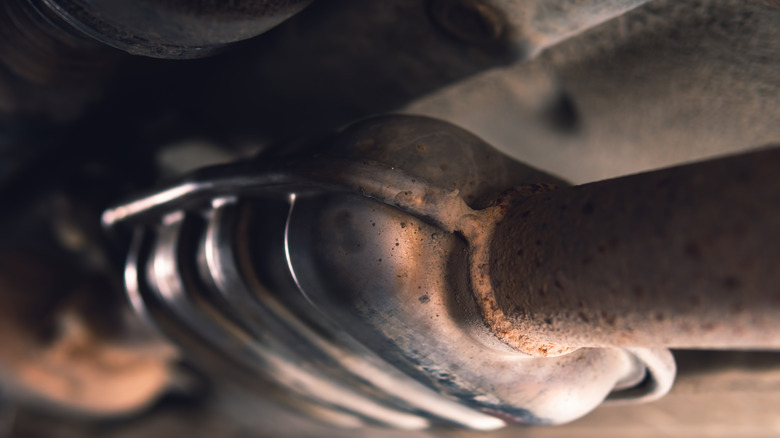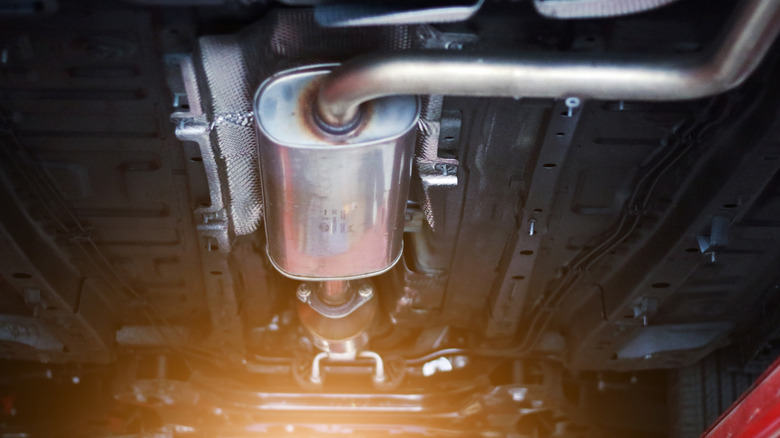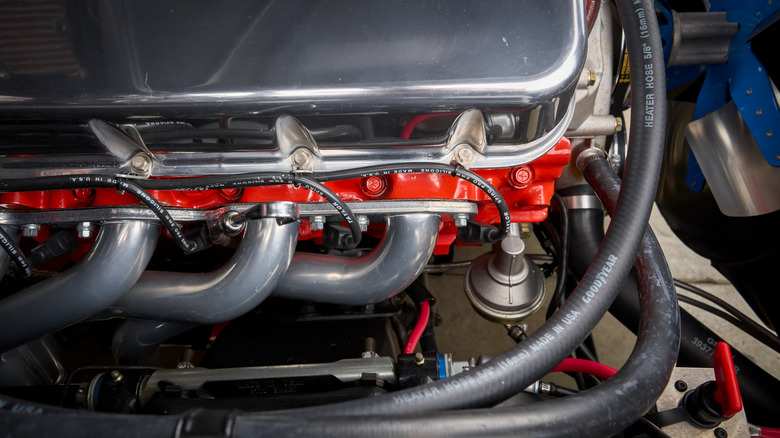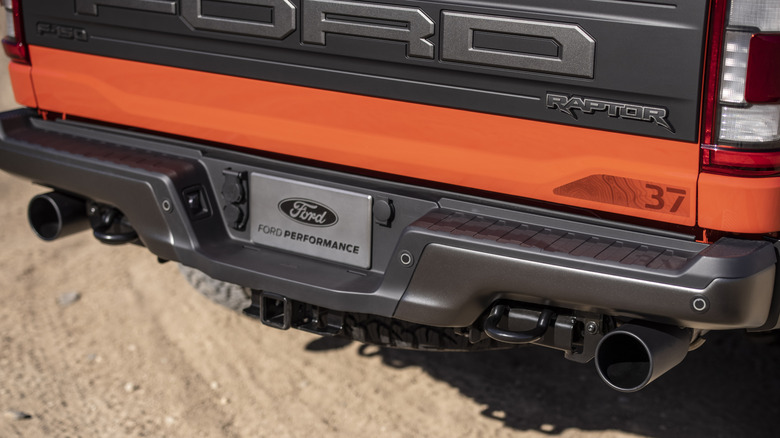5 Ways To Improve The Sound Of Your Diesel Engine Exhaust
There's just something undeniably thrilling about the sound of a well-tuned diesel engine exhaust. Among all the ways you can upgrade your diesel truck, the exhaust modifications are what give your vehicle the deep growl at idle or the aggressive roar when revving. The best-sounding cars feature exhaust notes that resonate like music to the ears of any true enthusiast. Besides being a head-turner, a good diesel engine exhaust sound can improve your entire driving experience.
Over the years, I've worked on numerous diesel engines and experimented with custom exhaust systems on a variety of truck models, helping truck owners achieve their dream exhaust tone. I've learned that every modification — whether it's a simple muffler swap or a complete system — is different and requires a thoughtful approach to achieve desired results.
For diesel fans, achieving the perfect sound is as much a matter of personal expression as it is of performance. Improving your diesel engine's exhaust sound is about fine-tuning the tone and resonance to achieve the desired effect. Depending on the sound you prefer — a high-performance roar or a throatier note — there are several ways you can tune your exhaust while boosting your vehicle's performance.
Install a cold air intake
A cold air intake is one of the simplest and most effective upgrades to improve your diesel engine's exhaust sound. While stock intakes draw in hot air from the engine bay — which often has less oxygen and reduces combustion — a cold air intake reroutes airflow by pulling cool air from outside the engine bay.
The improved airflow boosts oxygen levels for the combustion process, leading to an increase in horsepower. It also allows the diesel engine to breathe easily, giving it an aggressive exhaust tone. Upon releasing the throttle, you'll likely hear a whoosh of air rushing through the intake.
With so many aftermarket air intakes on the market, the choice will depend on your diesel engine model. A large selection of these intakes are easy to install and are reasonably priced, allowing you to enjoy the best of both worlds: additional horsepower and an improved engine exhaust sound. When selecting an intake, consider factors like compatibility with your vehicle's engine and any potential warranty issues.
Use a resonator delete kit
Installing a resonator delete kit is an effective way to achieve a more aggressive exhaust tone without popping the hood, making any modifications to the engine itself, or even doing a full system overhaul. A resonator is a second muffler designed to reduce or dampen exhaust noise. Removing the resonator essentially removes the dampening effect and allows the exhaust to flow more freely, leaving a raspier exhaust note.
Without the resonator, your engine's exhaust note becomes louder, especially when revving or accelerating. While it gives a more race-inspired sound, the exact outcome can depend on the engine and exhaust system used, so results may vary.
However, removing the resonator's restrictive chamber produces a lot of cabin noise, which may be undesirable for some drivers in daily driving situations. Also, this modification affects the vehicle's emissions compliance and warranty. While the installation is relatively easy, it should be done correctly to avoid exhaust leaks.
Replace or modify the exhaust system
Upgrading your diesel engine's exhaust system is among the most affordable ways to boost performance and improve its sound. Similar to resonator delete kits, aftermarket exhaust systems work on improving airflow, and they are available in cat-back and axle-back exhaust types.
While cat-back systems replace everything behind the catalytic converter, axle-back systems replace components from the rear axle to the tailpipe. Both options improve exhaust sounds, but the cat-back versions are slightly better, as they offer a balanced sound and a horsepower and torque increase. On the other hand, axle-back types are typically more affordable, which makes them a popular choice. However, if you decide to switch to a cat-back or a turbo-back system, the cost of replacing the axle-back setup can add up, making it a more expensive option in the long run. These systems are primarily designed to enhance exhaust sounds rather than to boost horsepower.
The use of wider, mandrel-bent pipes improves airflow, which results in a pleasant tone that improves the overall sound quality. To top that off, most of these aftermarket exhausts offer customizable sound profiles, especially paired with other upgrades like larger-diameter or shortened pipes.
Swap the muffler and headers
Mufflers or header swaps are perfect for enthusiasts seeking to fine-tune and improve the diesel engine's exhaust sound even further. Stock mufflers are often restrictive and limit the flow of exhaust gases, but performance mufflers are designed to reduce this restriction. This gives your vehicle a deeper exhaust tone and reduces engine heat, which improves its efficiency. To keep the cabin quiet, some mufflers use materials like fiberglass packing, which absorb higher frequencies while amplifying lower ones.
Headers take performance to the next level by replacing the factory exhaust manifold with components that improve the flow of exhaust gases. Large-diameter headers are the most effective at increasing exhaust flow and reducing back pressure. They add a throatier tone to your diesel engine's sound profile, an enhanced exhaust volume, and even a boost in horsepower.
Before choosing headers, make sure to understand your goals and budget. While long-tube headers improve performance in the mid-to high-RPM range, they're pricier than short-tube headers. For best exhaust sound results, consider pairing the performance muffler with the right type of header. Most importantly, swap your muffler and headers through reputable performance shops. These specialists will provide expert guidance on the right modifications for your specific diesel engine to avoid compatibility issues. They'll also help you install the upgrades correctly.
Upgrade to larger or shortened exhaust pipes
Changing the size and length of your vehicle's exhaust pipes is another good way to improve the sound of your diesel engine. These modifications directly affect the tone, and come in larger and shortened exhaust pipe versions.
Larger diameter pipes reduce exhaust gas restriction, allowing for a faster and smoother flow. The result is a more resonant tone that has a fuller sound. Like headers, large pipes reduce back pressure, giving you additional horses and torque.
Shortened exhaust pipes decrease the distance traveled by sound waves before exiting, which amplifies the sound and increases the exhaust flow. The result is an exhaust tone that sounds more aggressive and almost race-inspired. Generally, large pipes deliver better results in terms of deep tones and boosting performance, while short pipes are a better option for those seeking a louder sound. Before you begin installing any pipes, make sure the modifications comply with local noise and emission regulations.
